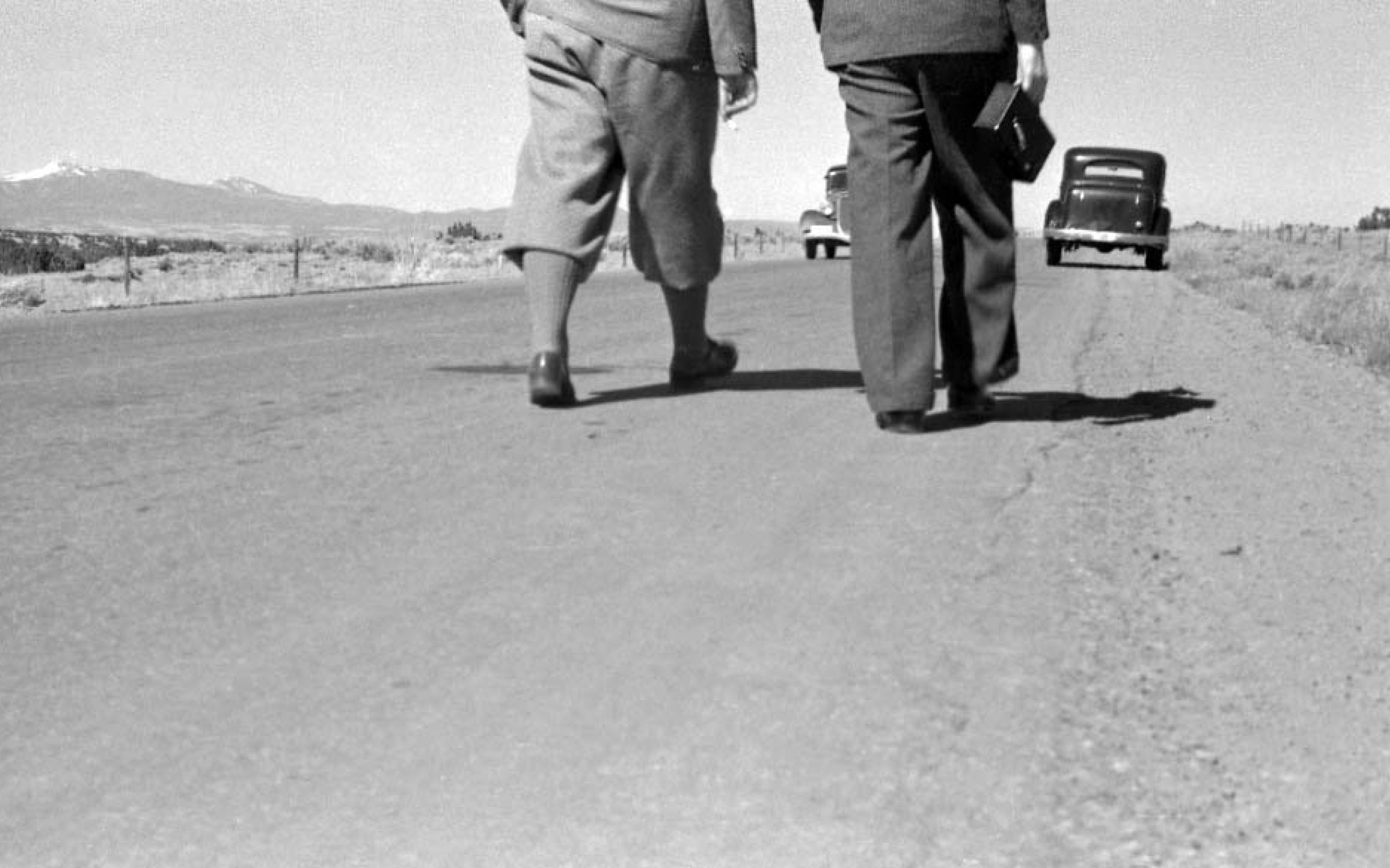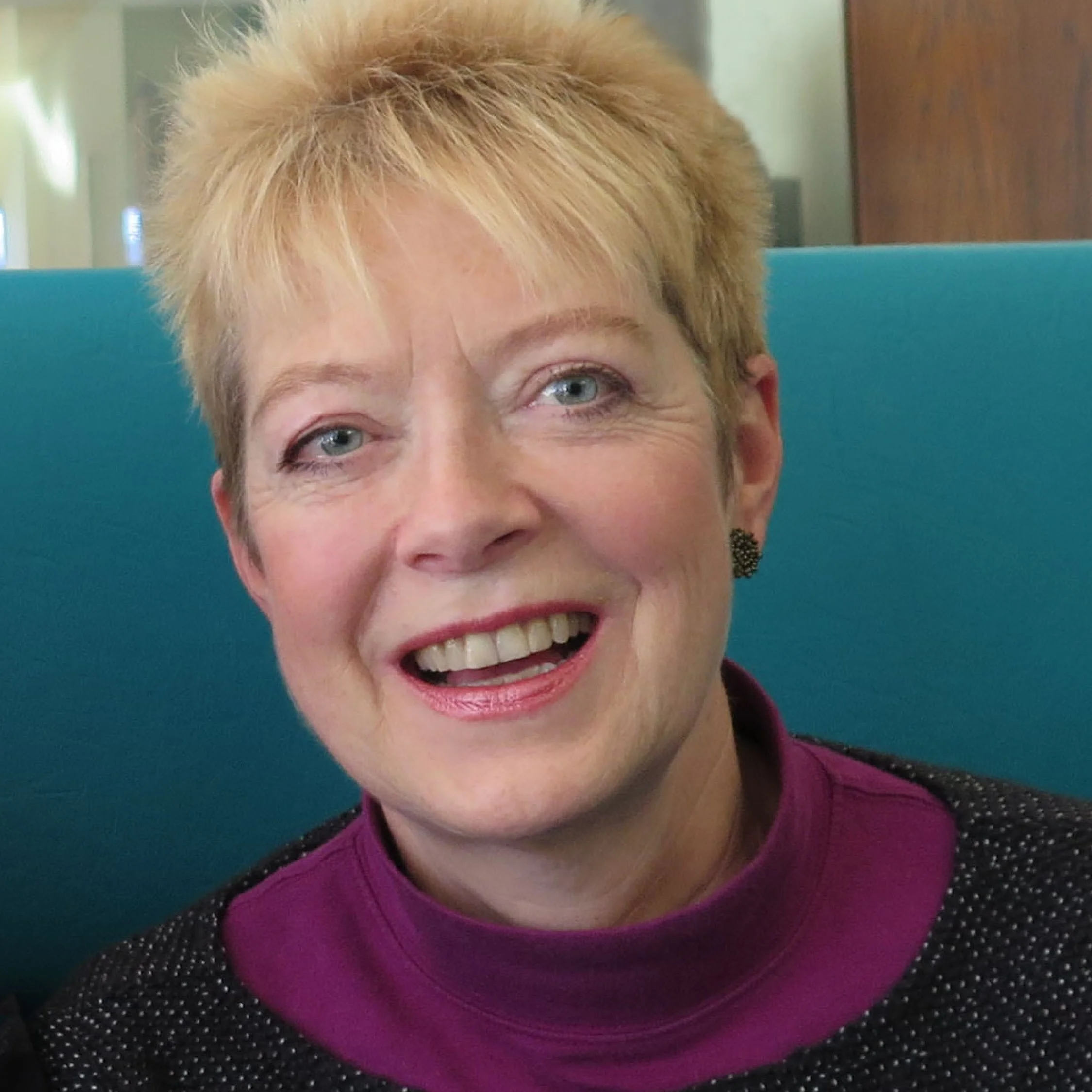Photograph by Alex Hammid
The exhibition Ticket to the New World curated by photographer Eva Heyd features works by numerous prominent figures of the First Czechoslovak Republic’s cultural scene who decided to leave the country at the beginning of World War II, either out of fear of persecution or refusing to live under a totalitarian regime. Heyd’s new book, Ticket to the New World, documents the fates of the artists, many of whom had significant impacts on the American cultural sphere.
The exhibition includes photographs by Alex Hammid and Bedrich Grunzweig, images by graphic designer Ladislav Sutnar, caricatures by Adolf Hoffmeister and Antonin Pelc, and documents from the career of soprano Jarmila Novotna.
A special presentation Jarmila Novotna: Transatlantic Opera, Screen, and Czech Cultural Presence, featuring selections from the George Daubek Collection of Novotna memorabilia, curated with biographical notes by Majda Kallab Whitaker of the Dvorak American Heritage Association, will be presented in the Dvorak Room on June 14, and by appointment until June 25.
Exhibition opening: Tuesday, June 14, 6:30 p.m., following Havel Conversations: Eva Heyd in Conversations with Alex Zucker. RSVP through Eventbrite.
Free and open to the public. Masks are required inside the venue.
VIEWING HOURS: 6:30 – 10:00 p.m. 3rd floor, Bohemian National Hall.
No RSVP is required except for the viewing of Jarmila Novotna memorabilia in the Dvorak Room (Bohemian National Hall, 3rd floor) from June 15-25 – to schedule your viewing, email us at info@vhlf.org.
The 2022 Rehearsal for Truth Theater Festival is dedicated to the people of Ukraine fighting for their independence. 🇺🇦 Suggested donation ($10) will be used to support Ukrainian refugees. All collected funds will be donated to People in Need, a Czech non-governmental, non-profit organization with over 20 years of experience in helping people in emergencies all over the world.
Project partners: Czech National Trust, Dvorak American Heritage Association, Czechoslovak Society of Arts and Sciences New York Chapter, Embassy of the United States of America in Prague, and Ministry of Culture of the Czech Republic.
ARTISTS PRESENTED IN THE SHOW
Photographer and filmmaker Alexandr Hackenschmied worked in the US under the name Alex Hammid, creating a number of exceptional documentaries in his new homeland, including the film To Be Alive! which won an Academy Award for Best Documentary. Black and white photographs from the beginning of Hammid’s career will be exhibited, already showing the unusual dynamic of his compositions, and a sense of a significant detail and joy of experimenting typical in his later work.
Photographer Bedrich Grunzweig stood at the birth of one of the most influential photography institutions in the US – the International Center of Photography – and worked as Cornell Capa’s right hand for many years. Grünzweig’s work presented in the show belongs to classic humanist photography. His pictures from the streets of New York are done as if by accident. He didn’t mean to be a reporter, but he aimed to stimulate emotional response.
Ladislav Sutnar, stage and graphic designer, came to the United States to install the Czechoslovak pavilion in Flushing Meadows at the 1939 New York World’s Fair. Sutnar, however, remained in the US and later became an acclaimed American designer, making his mark as one of the founders of modern information graphics. Sutnar's graphic designs presented in the show are from the era when he worked for Sweet’s Catalog Service, and demonstrate his new dynamic approach in visual depiction.
Adolf Hoffmeister and Antonin Pelc were arrested in Paris at the beginning of World War II and later came to the US via a Moroccan concentration camp. Hoffmeister became an editor in the US Office of War Information and a broadcast editor of Voice of America for Czechoslovakia, where he frequently presented his friends Voskovec and Werich’s shows. He began publishing antifascist caricatures in major American newspapers and magazines. In 1943, together with Antonin Pelc (working under the pen name of A. T. Peel), they exhibited political caricatures in the Museum of Modern Art, making it the first-ever Czech exhibition in the famous museum. The caricatures in the show include Hoffmeister’s well-known rebus: Roosevelt’s cigarette in holder + Churchill’s cigar + Stalin’s pipe = Victory. This victorious equation appeared everywhere at that time - it was portrayed on postcards, ties, or even handkerchiefs.
Jarmila Novotna: Transatlantic Opera, Screen and Czech Cultural Presence
View images from the life of Jarmila Novotna (1907-1994), the great 20th century Czech opera singer and actress who had a brilliant career in Europe and America. Selections from the George Daubek Collection of Novotná memorabilia, curated with biographical notes by Majda Kallab Whitaker, Dvořák American Heritage Association, will be presented in the Dvořák Room on June 14th. (or other dates by appointment)
Emmy Destinn’s student, the beautiful opera singer Jarmila Novotna immigrated to the US in 1939 and debuted at the Metropolitan Opera only a year later. During her shining career, she also performed as an actor in films, including MGM’s Academy-Award winning “The Search” in 1948. She toured widely in America, and with Jan Masaryk, the Czech Foreign Minister-in-Exile, recorded Czech folk songs in memory of the village of Lidice that was obliterated by Nazis in 1942. Her presence on the opera stage and in concert drew attention to Czechoslovakia’s plight under German and Soviet control. In 1991 Novotná was awarded the prestigious Order of Thomas Garrigue Masaryk by President Václav Havel.
Other artists mentioned in the book Ticket to the New World
Jan Werich, Jiri Voskovec and Jaroslav Jezek emigrated from Czechoslovakia to the United States during WWII in fears of Nazi persecution. Complicated at first, the fates of the W+V duo led to success on Broadway. One stayed in the US, the other returned home. The third – Ježek – died on the other side of the ocean. Aside from Voskovec, a success story in the American film industry belongs to Hugo Haas – first as an actor and later as an acclaimed director.
A number of distinct figures made their mark in the history of visual arts: following an exceptional career in various art institutions, the Bratislava-born Thomas Messer became the director of the Guggenheim Museum. He not only stood at the helm of the Museum for twenty-six years and significantly expanded its collections but also introduced many prominent, mainly European, artists to the American public.
Paul Fierlienger engaged with animated films for over thirty years. He came to the US as a child with his parents and is the only remaining living persona among the ones presented in the series. His Philadelphia animation studio was a birthplace for hundreds of short Nickelodeon children's films or PBS’s legendary Sesame Street and many of which were awarded prestigious awards.
Architect Jan Hird Pokorny took part in the American architectural scene for over fifty years and participated in the New York preservation movement from its very conception. Architect and engineer Jaroslav Polívka worked together with Kamil Roškot on the construction of the Czechoslovak pavilion for the New York World’s Fair and later became Frank Lloyd Wright’s coworker, preparing designs for the Guggenheim Museum as well as other interesting buildings.
Composer Bohuslav Martinu lived in New York starting in 1941 and taught at the Mannes College of Music and close-by Princeton University. The famous Czech pianist Rudolf Firkusny also took refuge in the United States in 1940 and while spending over fifty years in exile, remained a leading ambassador of Czech music.
New York also became home to a whole group of Czech journalists who would have been persecuted in the Czech Nazi Protectorate either for their political convictions or their Jewish background. Today, some of them remain almost unknown – for example Jan and Zdena Münzer, who belonged to a close circle of friends of Karel Capek; Stanislav Budin, who became the editor-in-chief of Newyorské listy (New York Herald) or Karel Scheldon, a Voice of America contributor. The New York group also included a trio of close friends – Jan Masaryk, Marcia Davenport – a born-American writer, who was inspired by the Czech minority in Pittsburgh for her novel The Valley of Decision and physician Karel Steinbach, who for decades became the doyen of the gradually incoming culturally-oriented Czech immigrants.
An interesting personality of the Czech New World was also fashion designer Oldrich Rosenbaum. While in Prague, he dressed the local high society; in the US he worked under the name of Oldric Royce, creating the most elegant dresses for first ladies and silver screen stars such as Greta Garbo.
ABOUT
EVA HEYD was born in Prague and graduated from Charles University. She began her career as a professional photographer and journalist in what was then Czechoslovakia. In 1985 she emigrated to the United States, where she lived for twenty years, working as a photographer for prestigious museums and galleries in New York. 2005 she returned back to the Czech Republic where she settled in the small town in Rožmitál pod Třemšínem, Central Bohemia. Currently she acts as a project manager of Czech National Trust and takes care of several projects of this nonprofit organisation. She is active as a journalist, photographer, and writer and she also curates art shows. In her own artwork, she concentrates on art projects experimenting with the use of photographic images. She has exhibited in leading galleries in New York as well as other parts of the United States and Europe.
ABOUT THE 2022 REHEARSAL FOR TRUTH THEATER FESTIVAL
The 2022 Rehearsal for Truth Theater Festival: Under Pressure is organized by the Vaclav Havel Library Foundation and the Bohemian Benevolent and Literary Association in partnership with the Polish Cultural Institute New York, GOH Productions, Czech National Trust, Terezin Music Foundation, Trap Door Theatre, and Yara Arts Group.
The festival is supported, in part, by public funds from the New York City Department of Cultural Affairs in partnership with the City Council, New York State Council on the Arts with the support of the Office of the Governor and the New York State Legislature, Consulate General of the Czech Republic in New York, Ministry of Culture of the Czech Republic, Ministry of Human Capacities, Hungary, and Society for the History of Czechoslovak Jews.


